Teaching standard measurement to 2nd Grade students builds on previously taught skills of non-standard measurements. This math concept is best learned with engaging and hands-on measurement activities. In this Math Made Fun unit, the introduction of standard measurements allows students to begin estimating how long or tall different items are in inches and centimeters. When students become comfortable and proficient in understanding and using these forms of measurement, they are able to transfer these skills to more complex data analysis.
In this math unit on Measurement, students will learn to:
* Measure the length of an object by selecting and using appropriate tools such as rulers, yardsticks, meter sticks, and measuring tapes.
* Measure the length of an object twice, using length units of different lengths for the two measurements.
* Describe how the two measurements relate to the size of the unit chosen.
* Estimate lengths using units of inches, feet, centimeters, and meters.
* Measure to determine how much longer one object is than another, expressing the length difference in terms of a standard length unit.
* Use addition and subtraction within 100 to solve word problems involving lengths that are given in the same units.
SAVE $$$ WITH THE BUNDLE!
ALL 10 UNITS INCLUDED!
Here are the 10 Units that will be included in the 2nd Grade: Math Made Fun Curriculum
Unit 1: Number Sense to 1,000
Unit 2: Place Value to 1,000
Unit 3: Addition and Subtraction Fluency within 100
Unit 4: Addition and Subtraction with 2-Digit and 3-Digit Numbers
Unit 5: Geometry and Fractions
Unit 6: Graphs and Data
Unit 7: Time
Unit 8: Money
Unit 9: Measurement
Unit 10: Multiplication and Division
This 2nd Grade Math Made Fun Unit 9 has 17 hands-on math centers and 43 NO PREP/Activity pages!
Each unit includes a scope with the objectives:

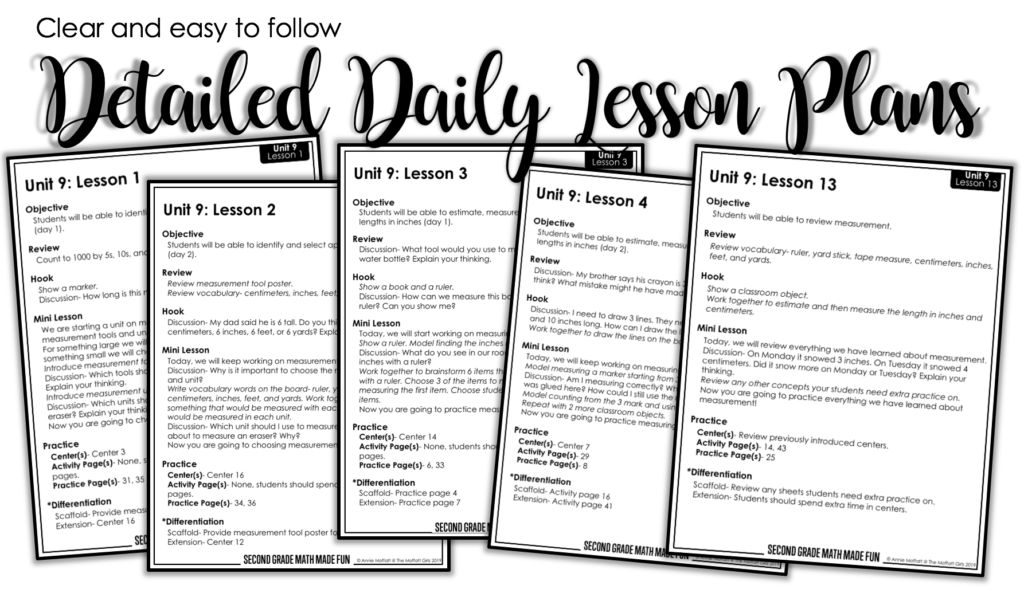
The Daily Lesson Plans offer differentiation for on-level, below-level and above-level students.
The lesson plans are broken down into 5 easy-to-follow parts:
1. Objective– What students should be able to do by the end of the lesson.
2. Review- A quick warm-up that has students practice previous skills that will be used in the current lesson.
3. Hook-A fun intro to get students engaged.
4. Mini Lesson– Teach, model, and discuss the new skill in today’s lesson.
5. Practice- Each practice section lists three types of activities that pair well with the specific lesson.
Center(s)- New center(s) to be introduced with the lesson.
Activity Pages- These pages require some basic materials such as scissors, glue or dice.
Practice Pages- These only require a pencil and crayons! They are great for table work, homework or work on the go!
✸Differentiation– Each lesson include scaffold and extension ides to meet the needs of students at all levels!
Pre and Post Assessments for EACH unit!
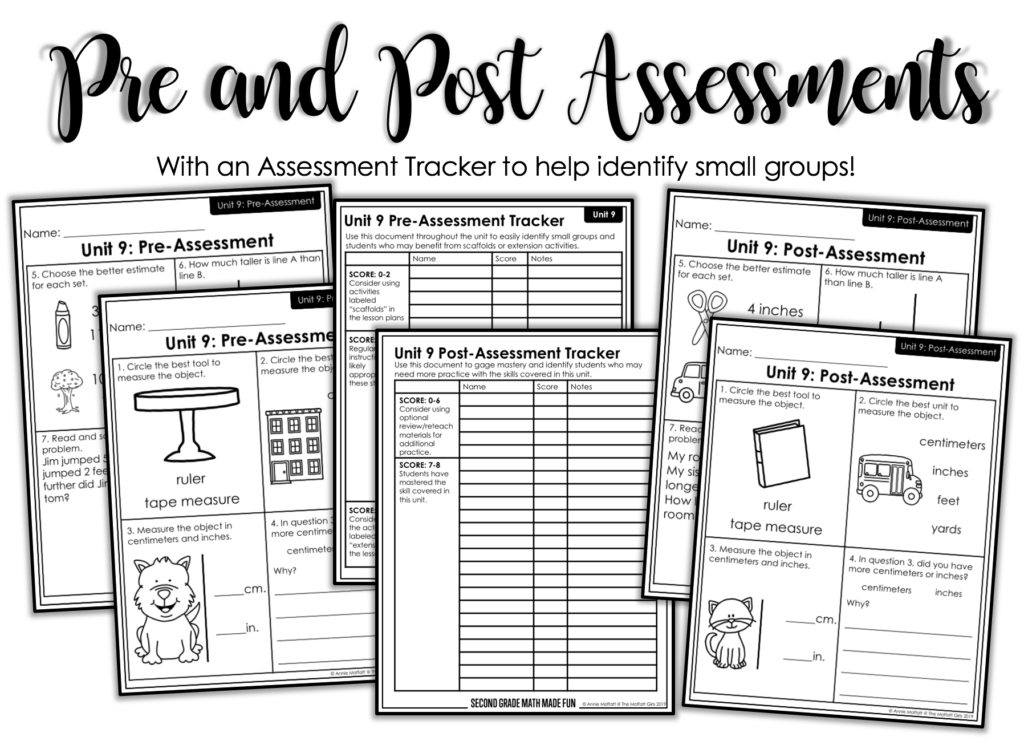
Material Wrap Up Page!
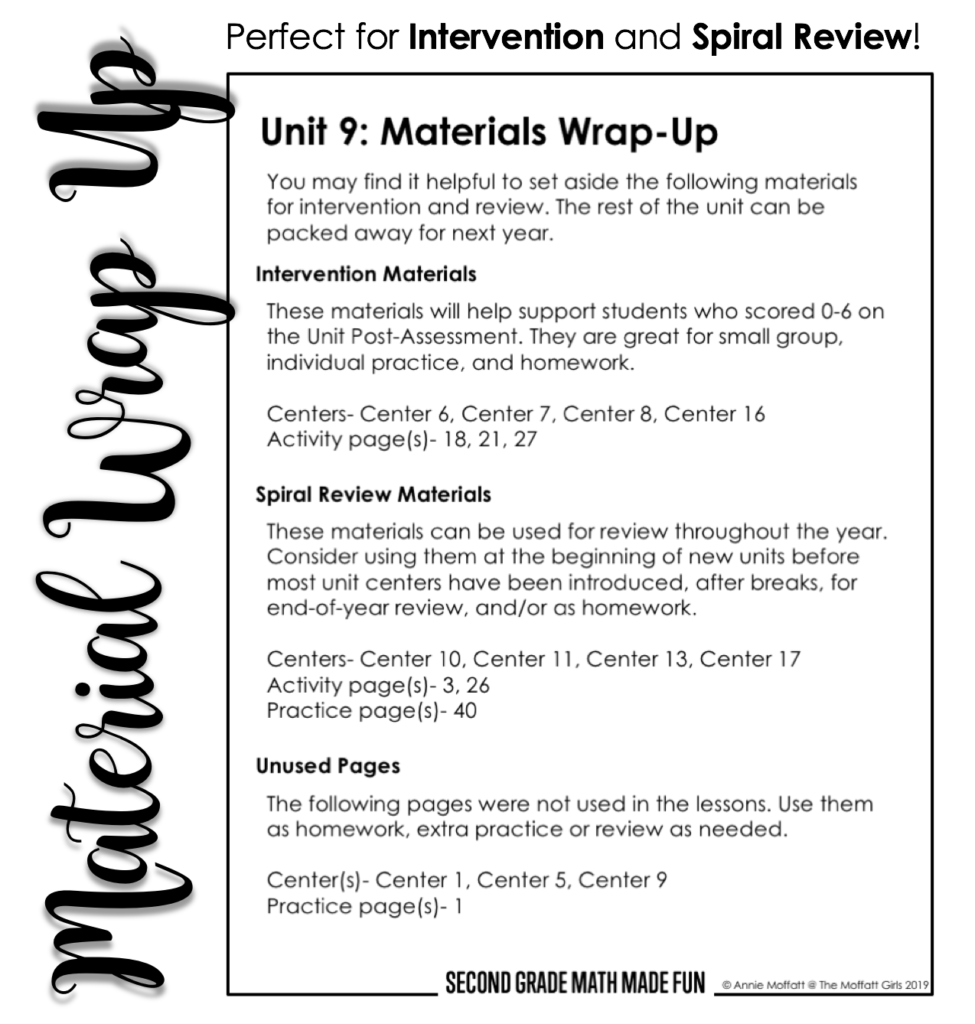
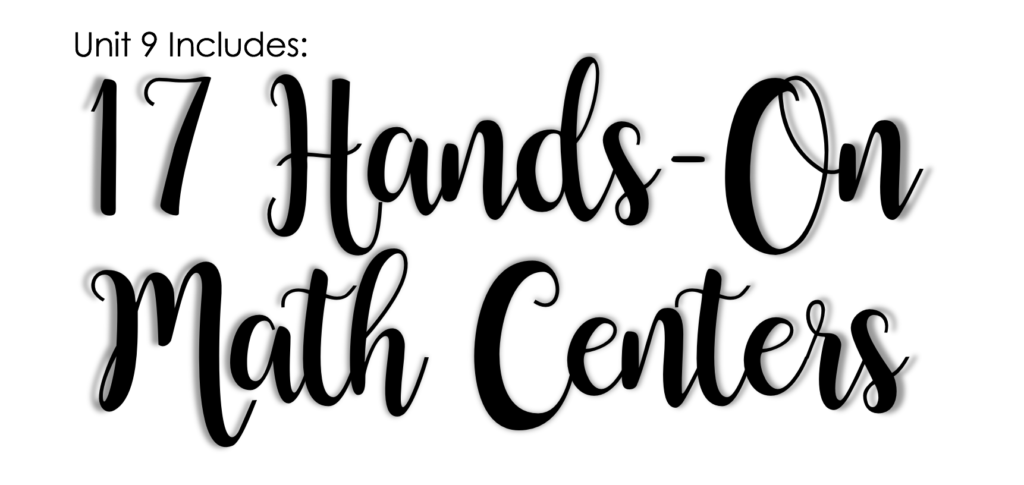
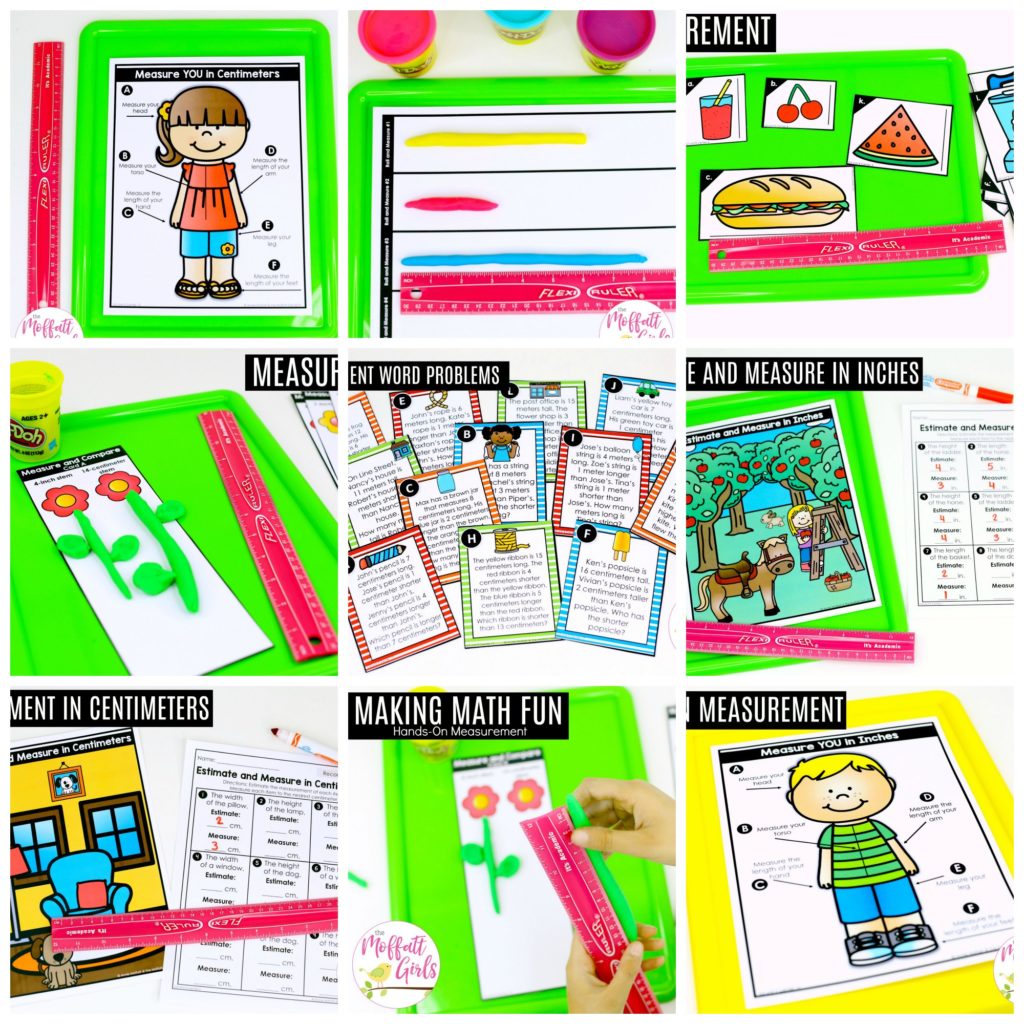
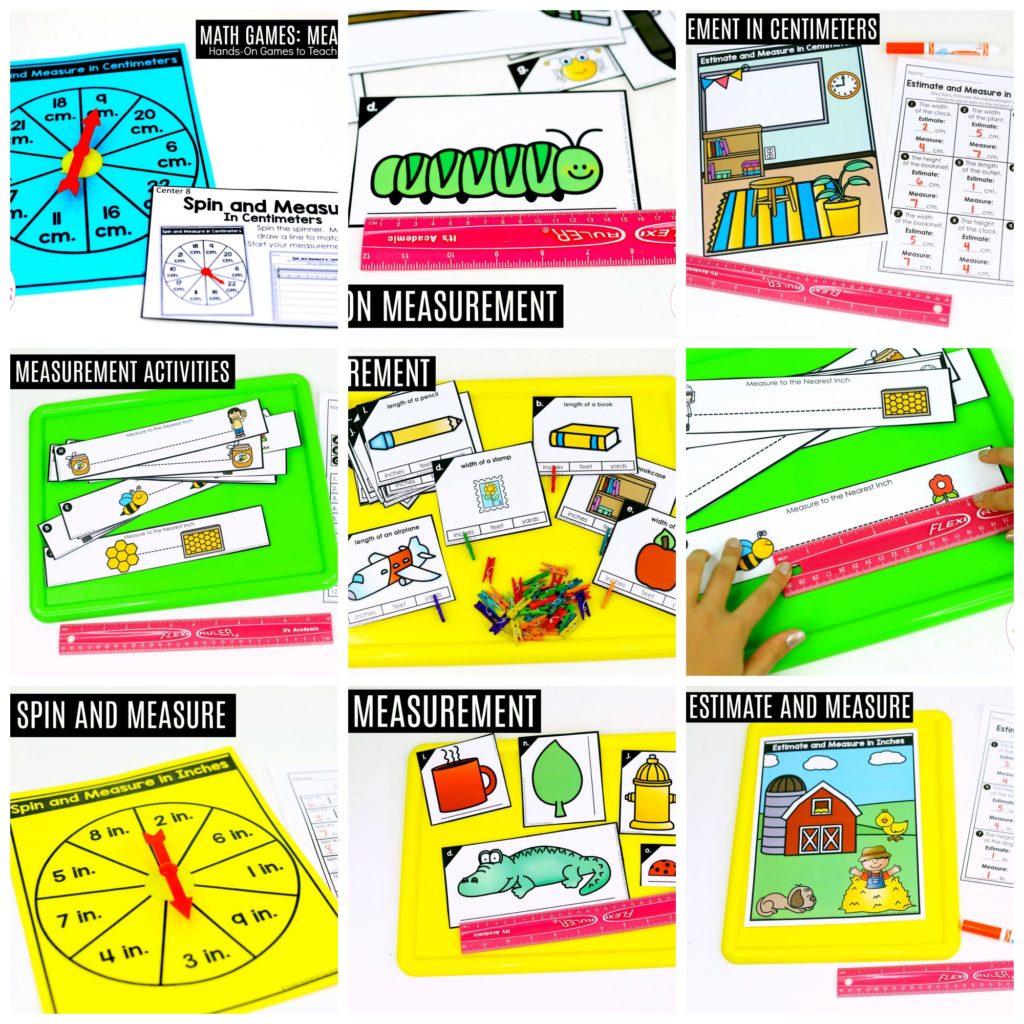
LET’S LOOK AT THE MATH CENTERS FOR UNIT 9 IN ACTION…
CENTER NUMBER 1: Estimate and Measure (In Inches)
Estimate the measurement of each item. Use a ruler to measure each item to the nearest inch.
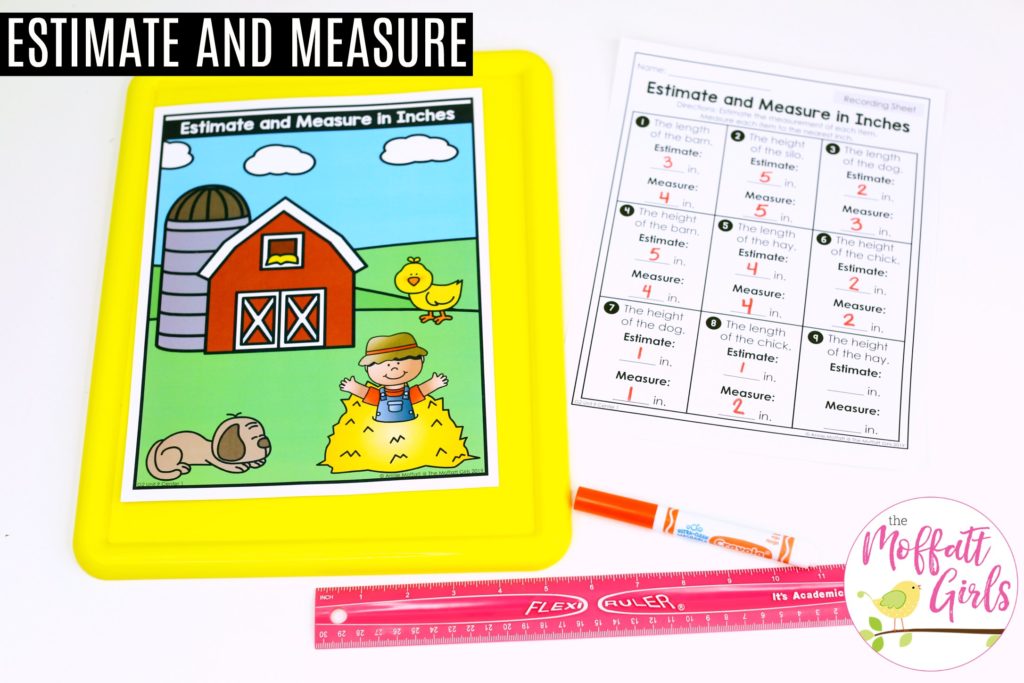
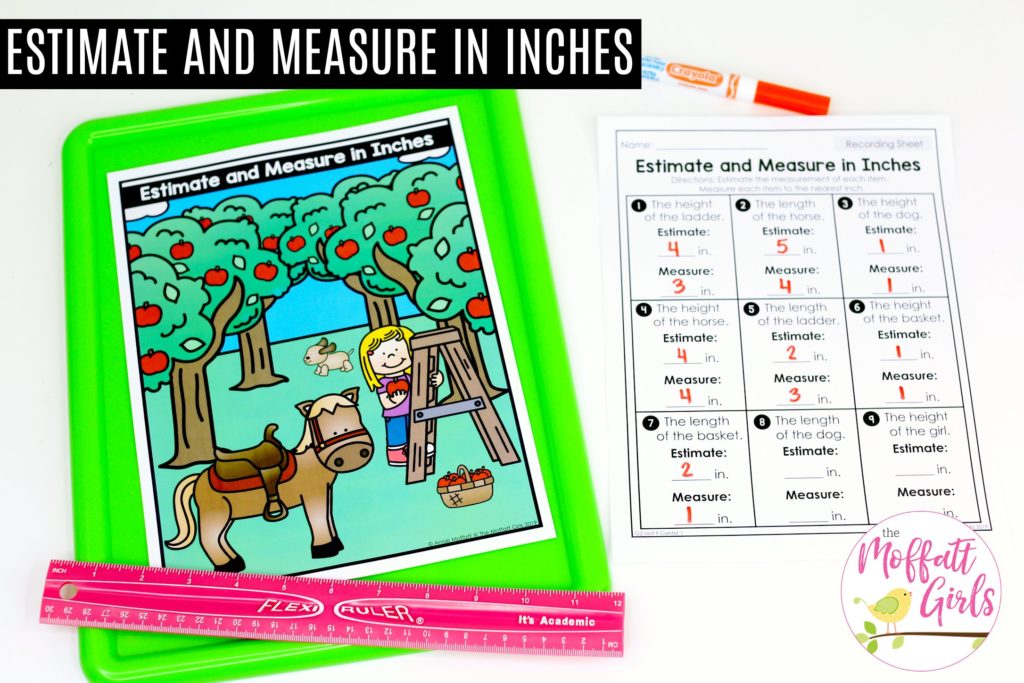
CENTER NUMBER 2: Estimate and Measure (In Centimeters)
Estimate the measurement of each item. Use a ruler to measure each item to the nearest centimeter.
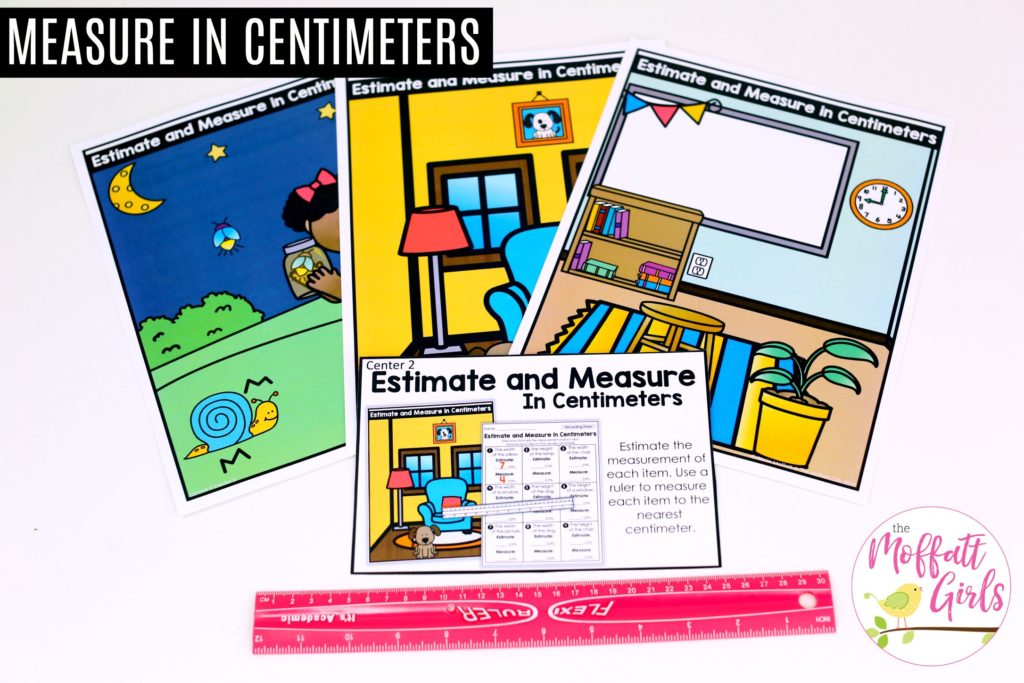
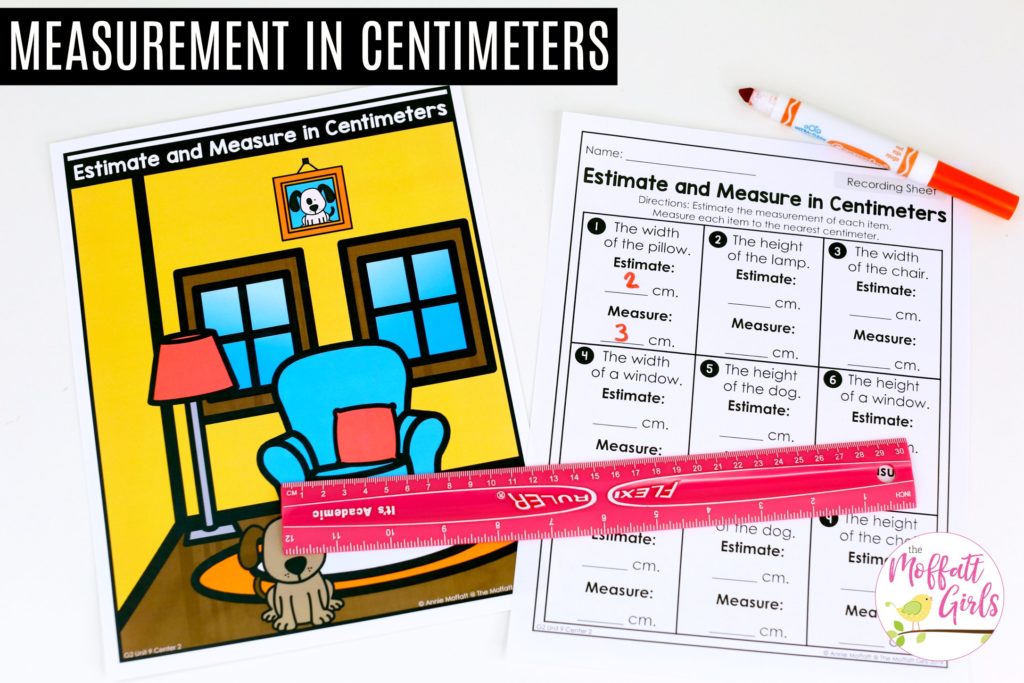
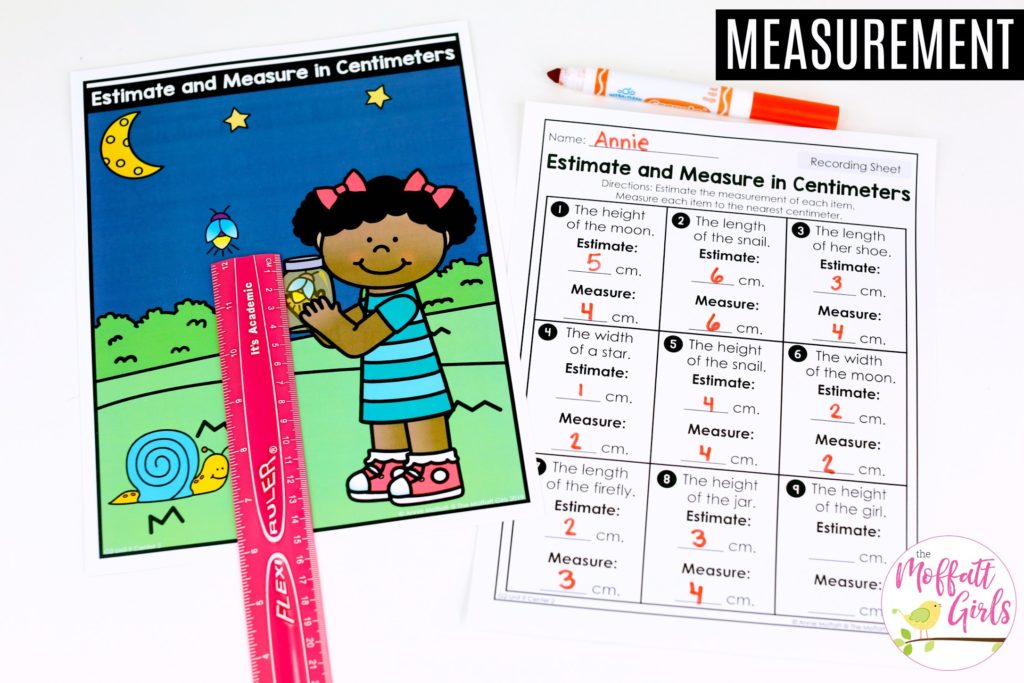
CENTER NUMBER 3: Inches, Feet, or Yards?
Read the card. Decide if the item would be best measured by inches, feet or yards. Record your answer on the recording sheet.
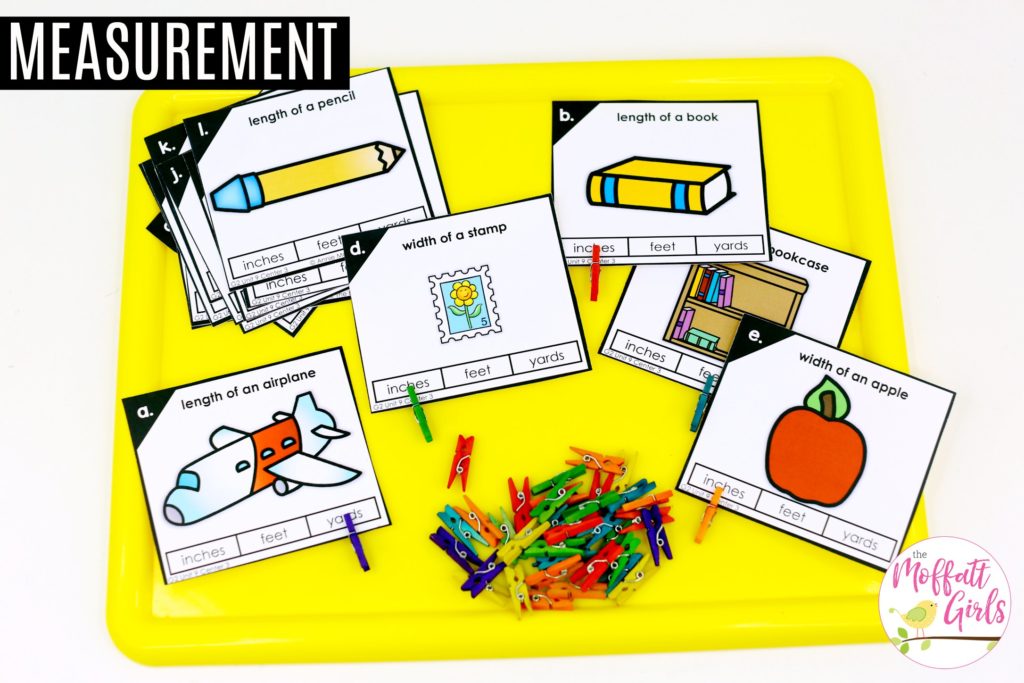
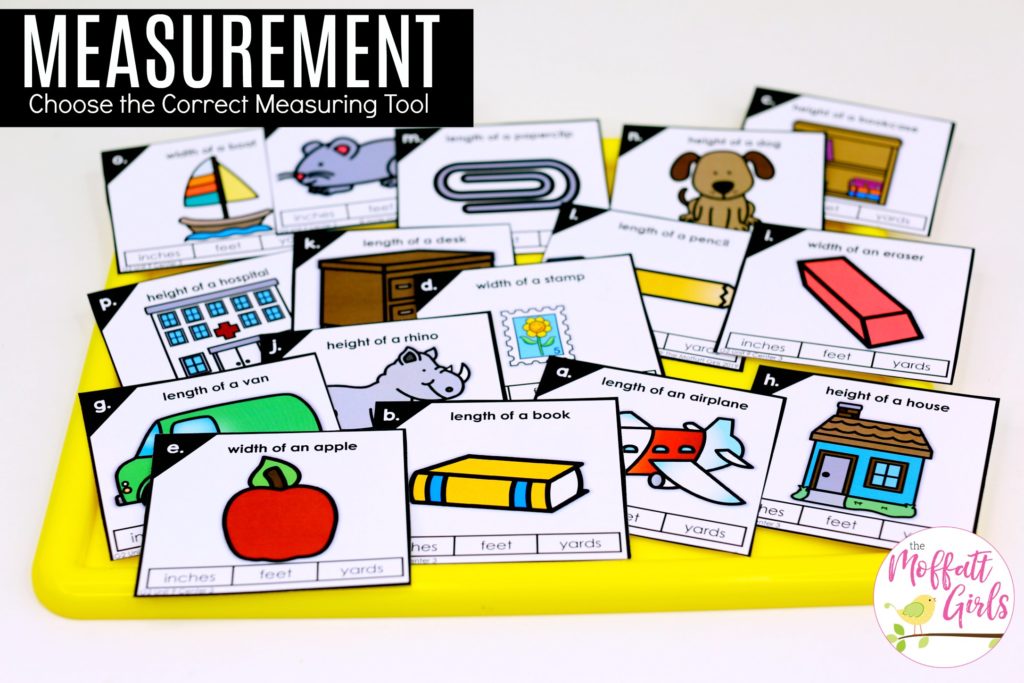
CENTER NUMBER 4: Guess and Measure (In Inches)
Estimate the measurement of each item. Use a ruler to measure each item to the nearest inch.
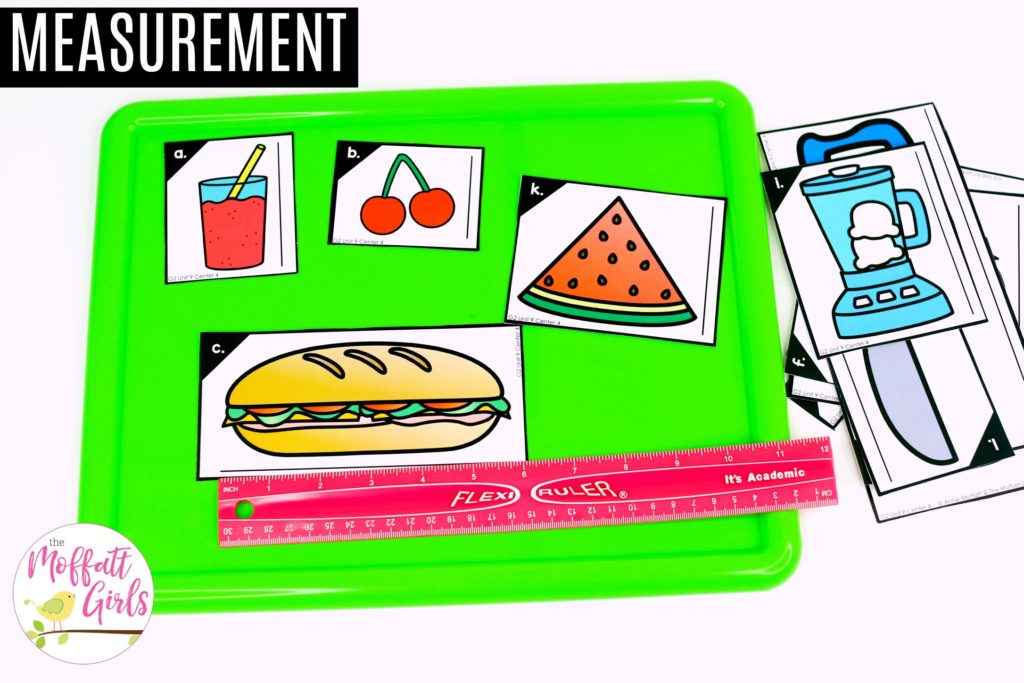
CENTER NUMBER 5: Guess and Measure (In Centimeters)
Estimate the measurement of each item. Use a ruler to measure each item to the nearest centimeter.
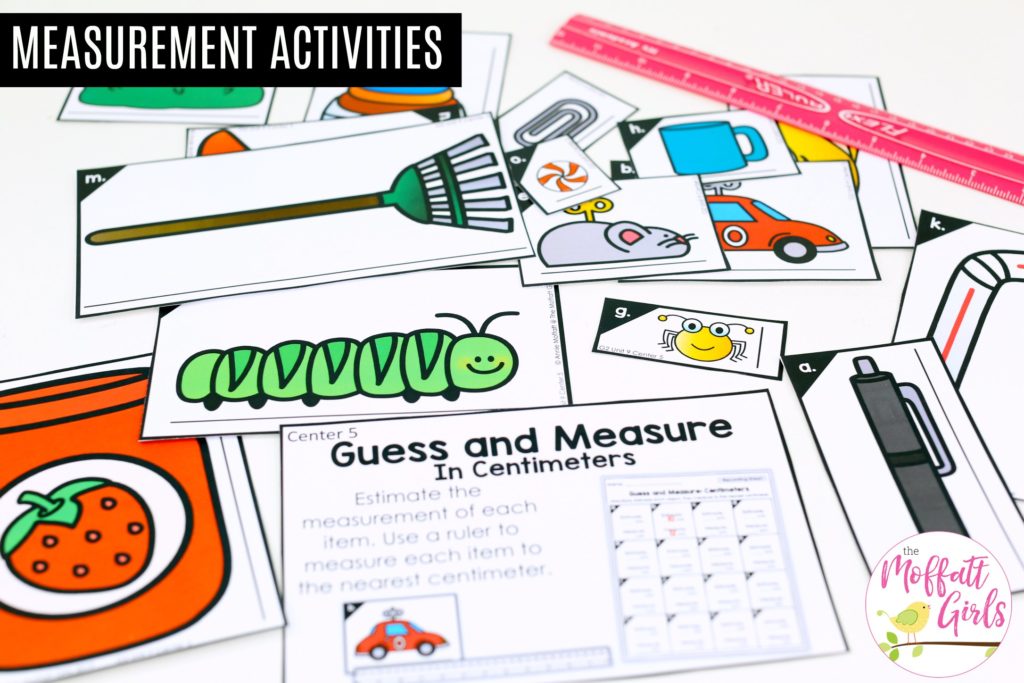
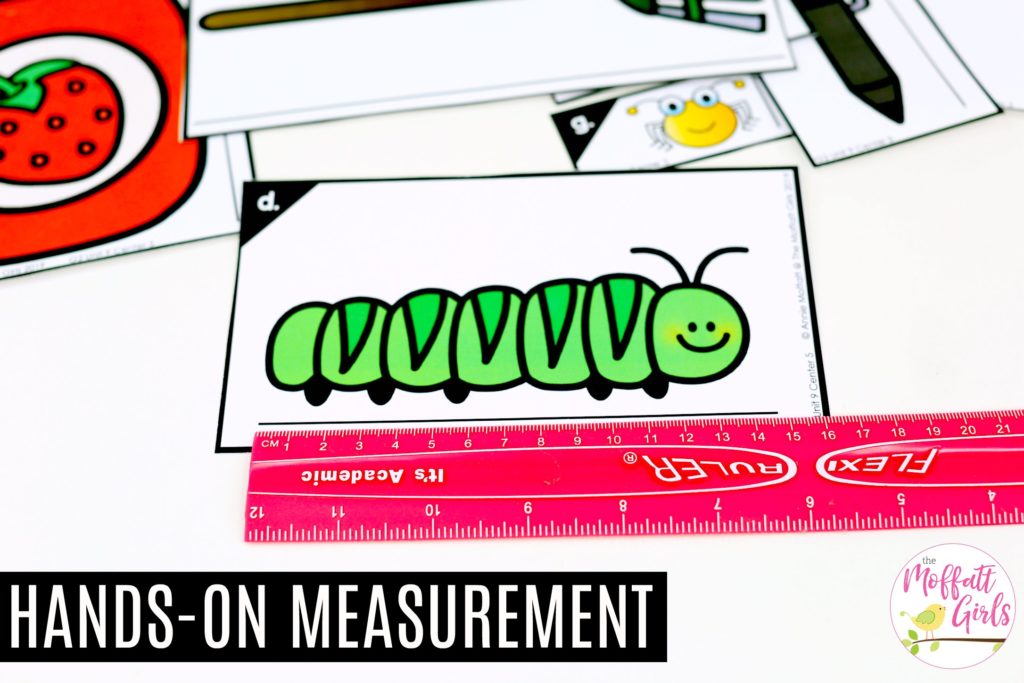
CENTER NUMBER 6: Measure Twice (Inches and Centimeters)
Measure each object to the nearest inch and centimeter.
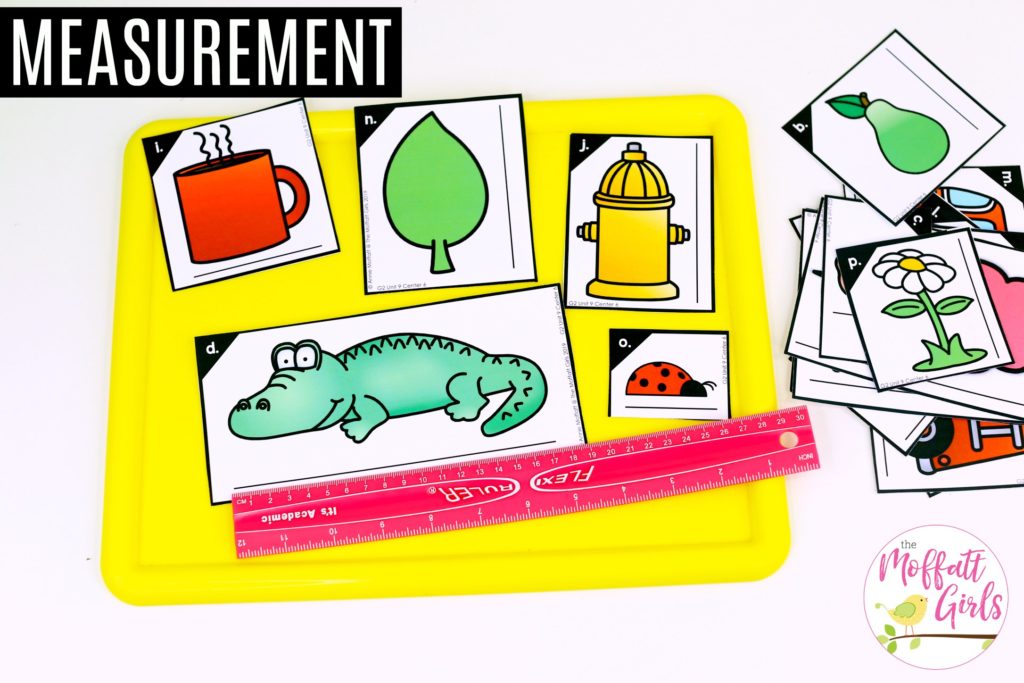
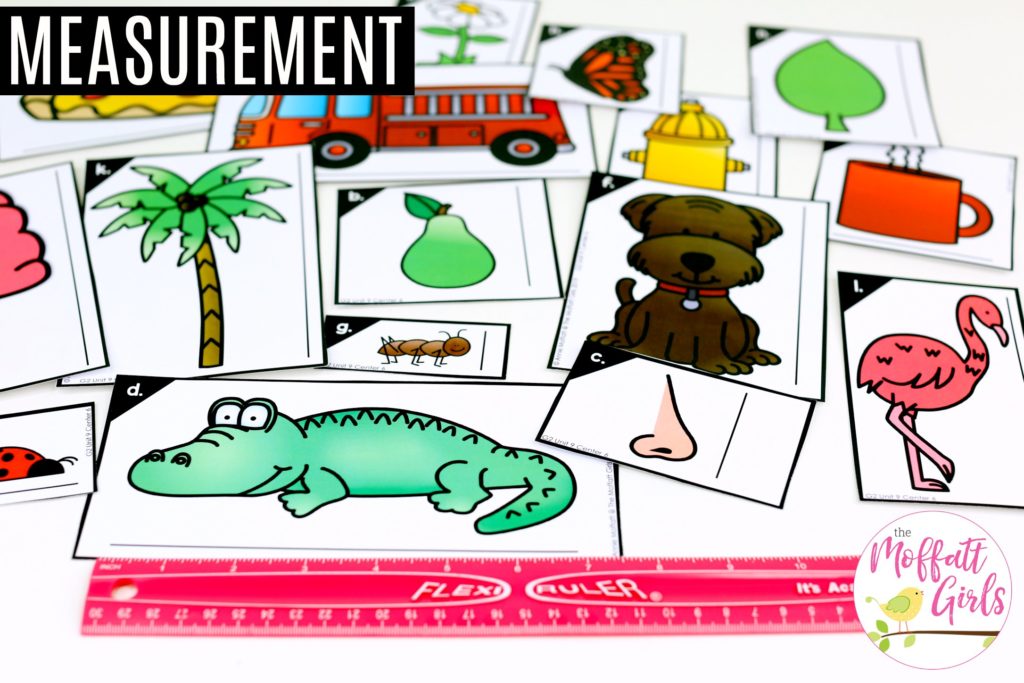
CENTER NUMBER 7: Spin and Measure (In Inches)
Spin the spinner. Measure and draw a line to match your spin. Start your measurement on the line.
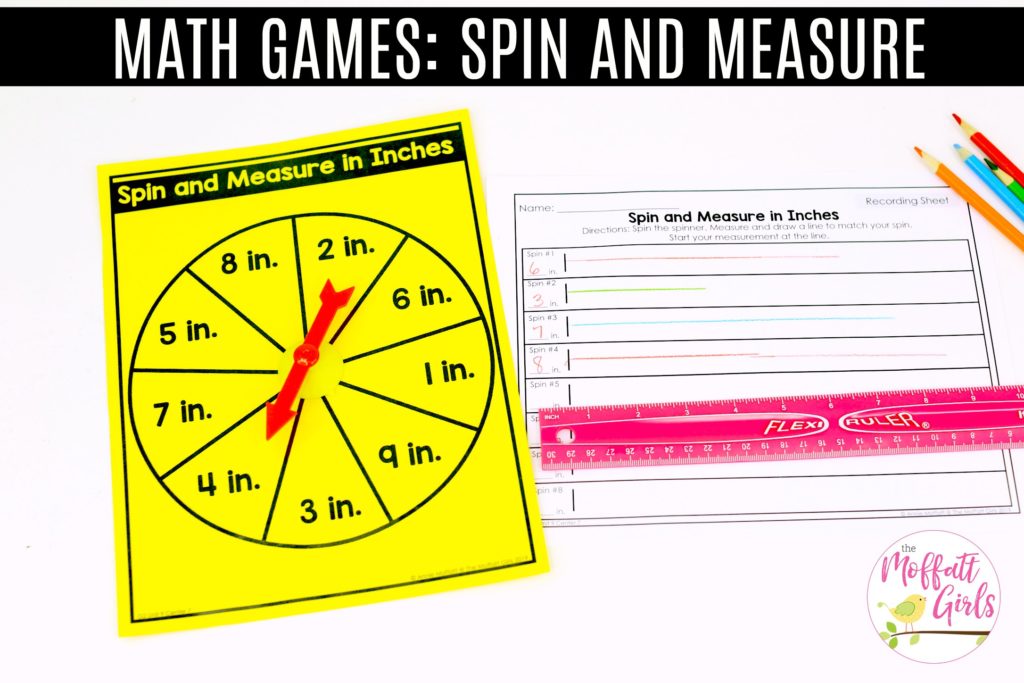
CENTER NUMBER 8: Spin and Measure (In Centimeters)
Spin the spinner. Measure and draw a line to match your spin. Start your measurement on the line.
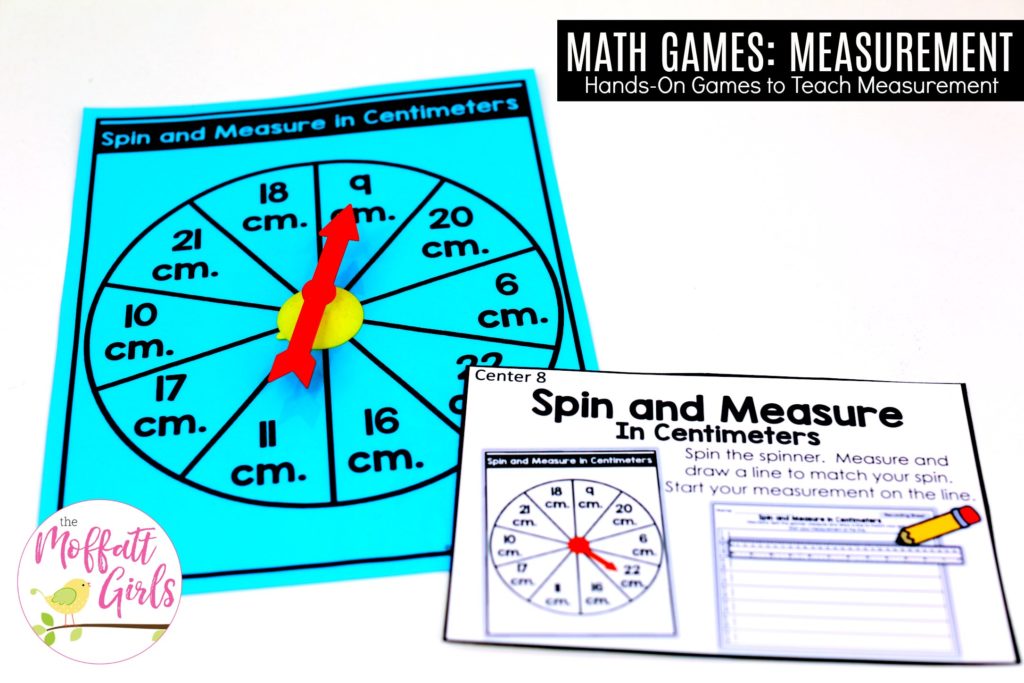
CENTER NUMBER 9: Spin and Measure (Inches and Centimeters)
Spin the spinner. Measure and draw a line to match your spin. Start your measurement on the line.
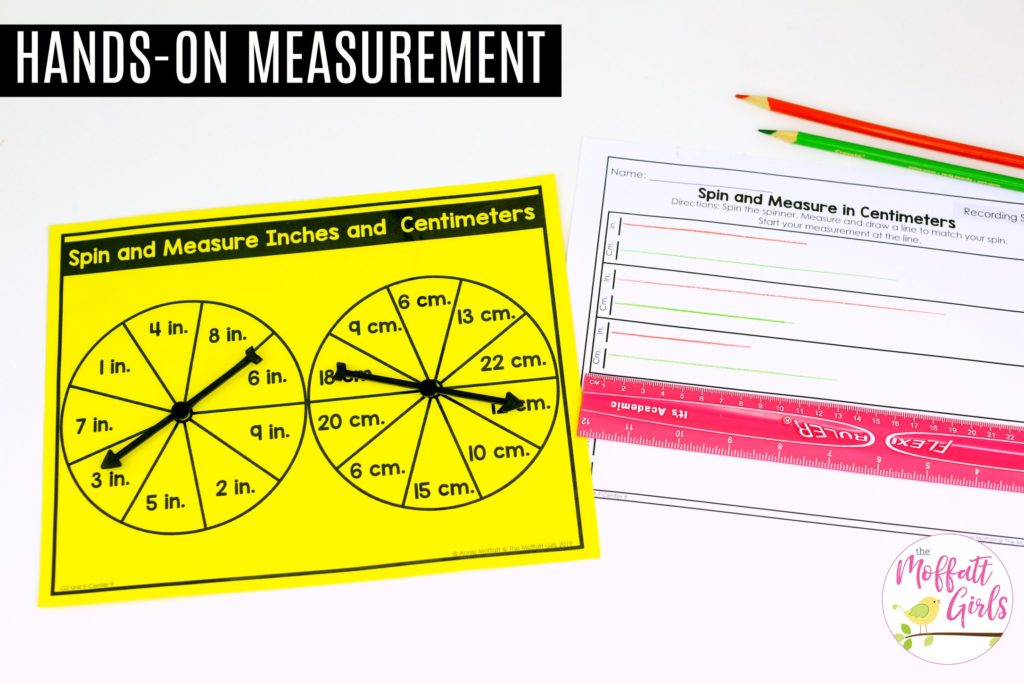
CENTER NUMBER 10: Measuring and Comparing Lengths (In Inches)
Measure the lines on each card to the nearest inch. Then compare the lengths to answer the questions.
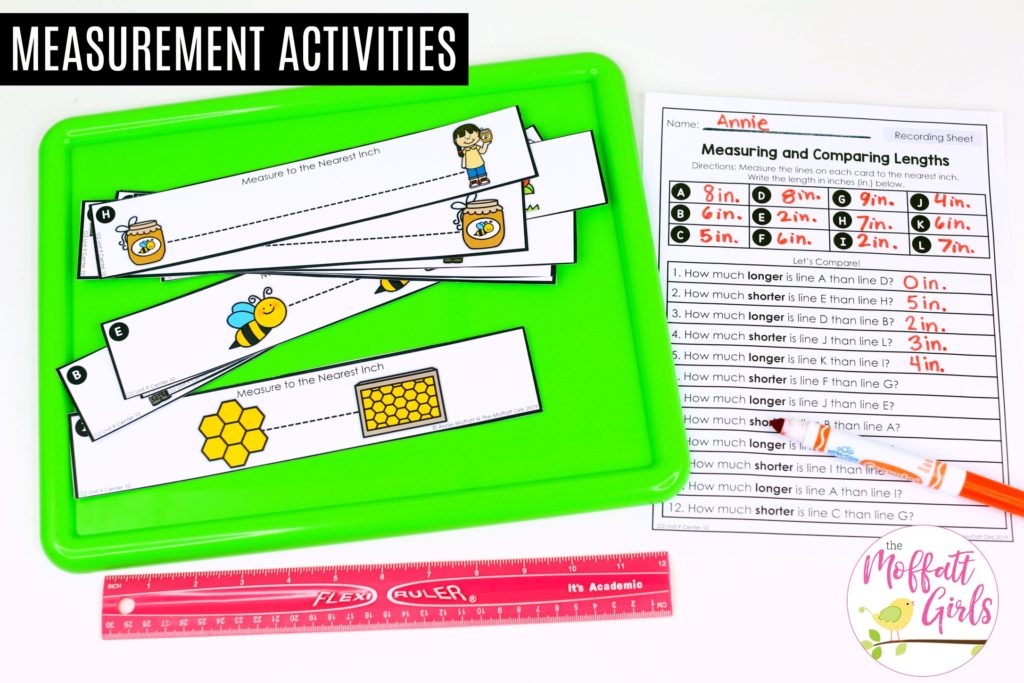
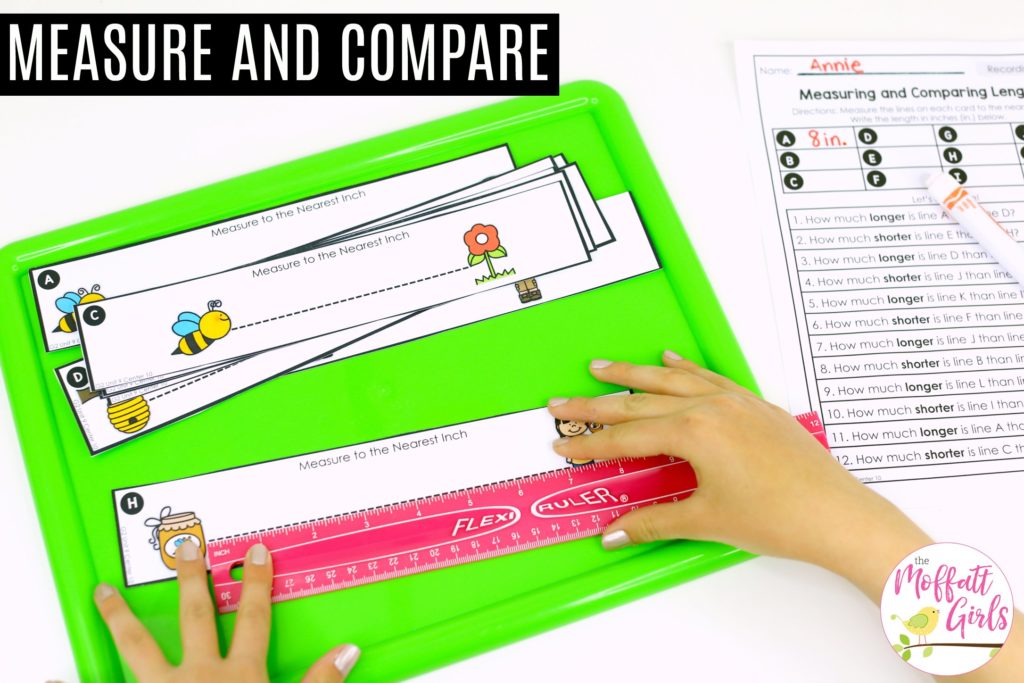
CENTER NUMBER 11: Measuring and Comparing Lengths (In Centimeters)
Measure the lines on each card to the nearest centimeter. Then compare the lengths to answer the questions.
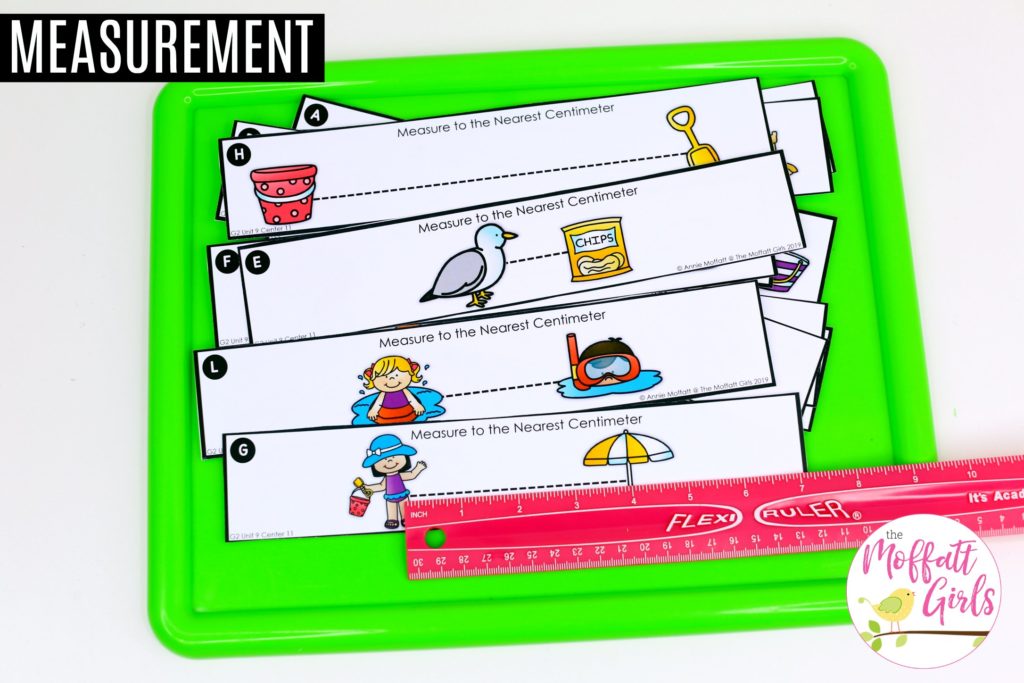
CENTER NUMBER 12: Roll, Estimate and Measure
Roll lines of play dough in different lengths. Estimate how many inches each line is. Measure the lines and record your answers.
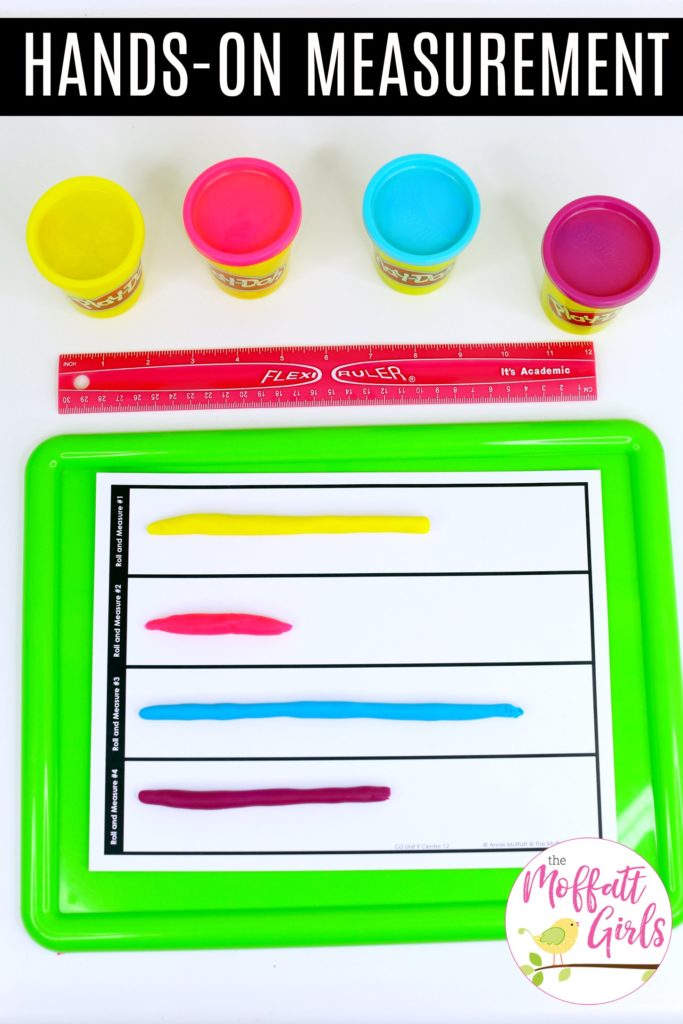
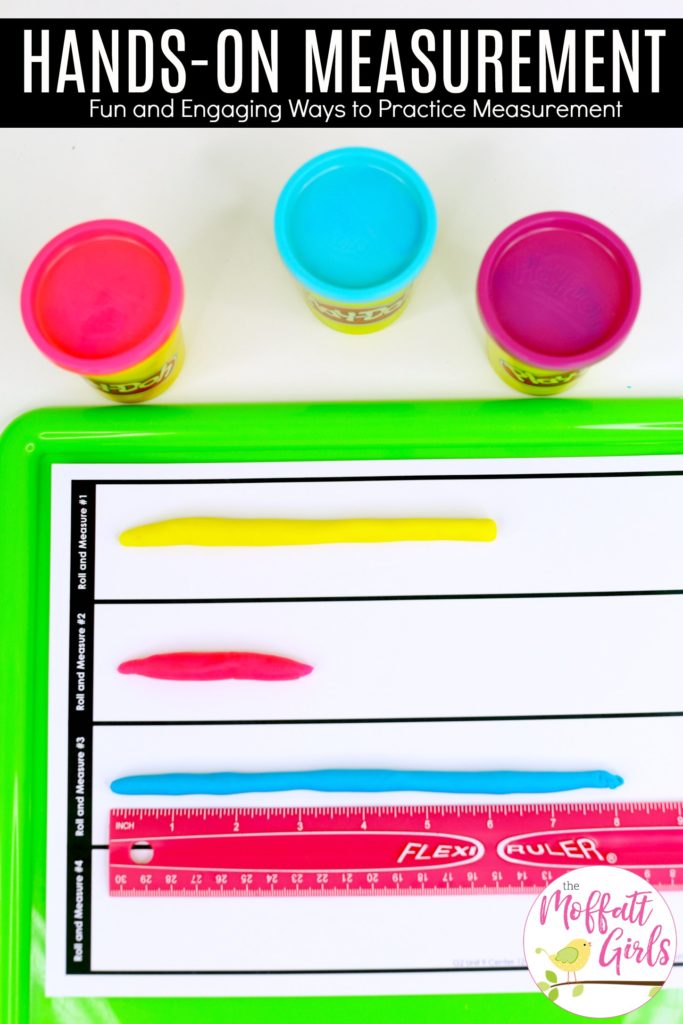
CENTER NUMBER 13: Measure and Compare
Measure and draw the correct stem lengths. Compare the lengths. Record which length is longer.
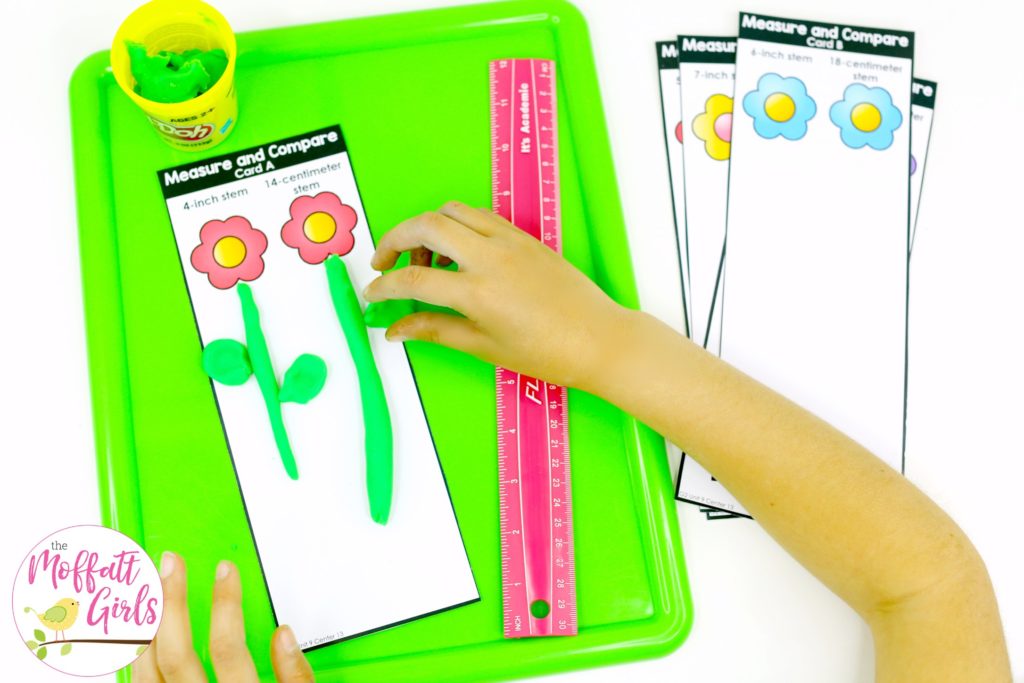
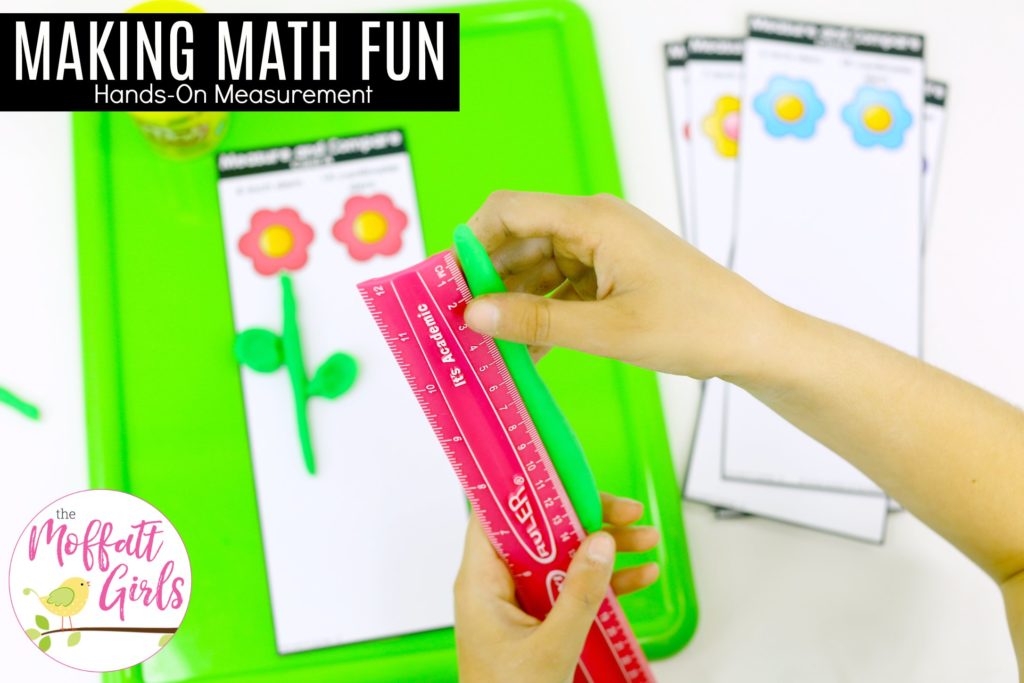
CENTER NUMBER 14: Measure YOU In Inches
Measure the different parts of your body in inches. Record your answers on the recording sheet.
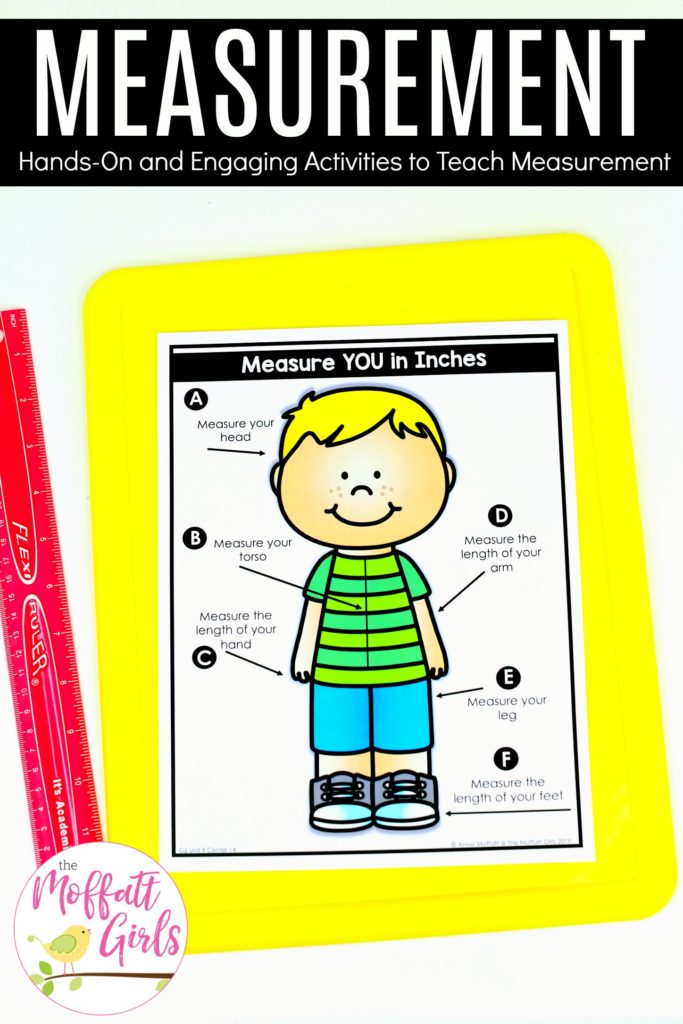
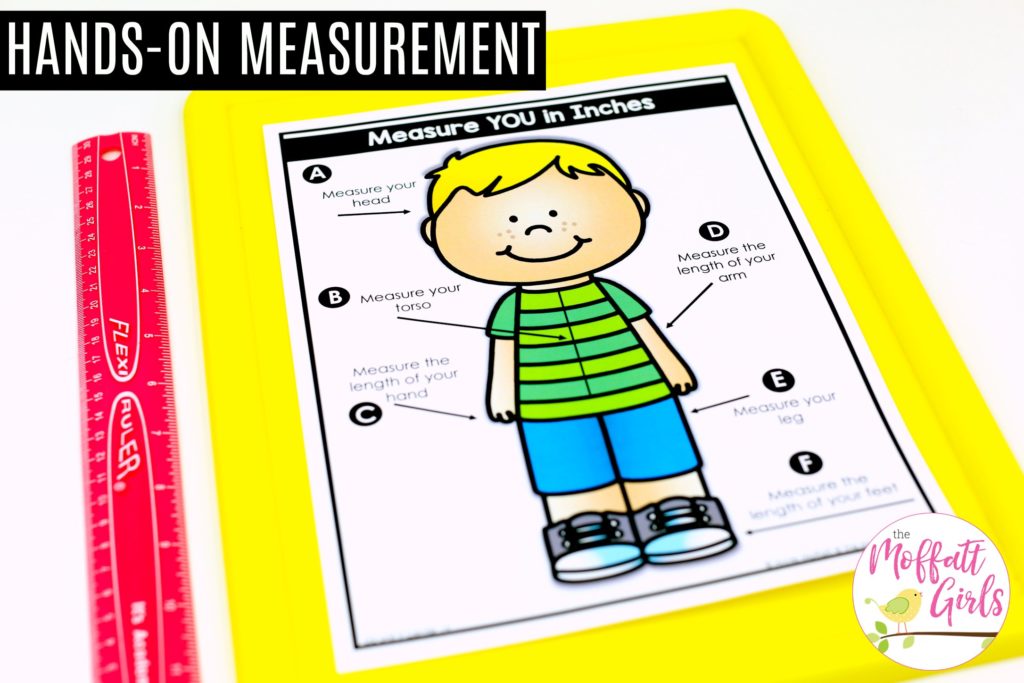
CENTER NUMBER 15: Measure YOU In Centimeters
Measure the different parts of your body in centimeters. Record your answers on the recording sheet.
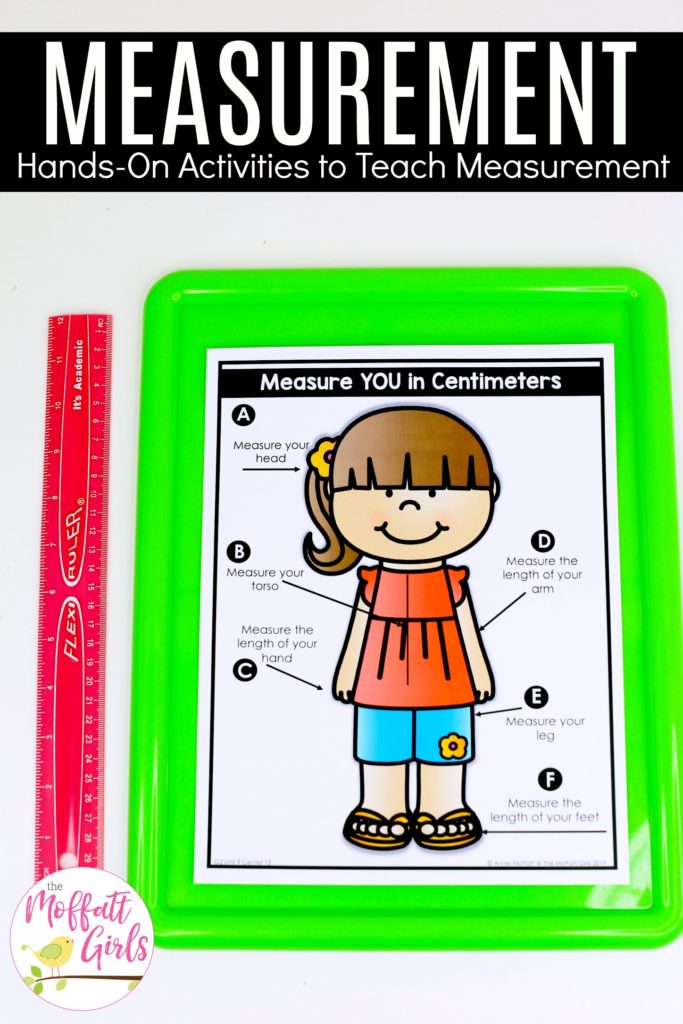
CENTER NUMBER 16: Estimate It
Decide which measurement would be the best estimate for each item.
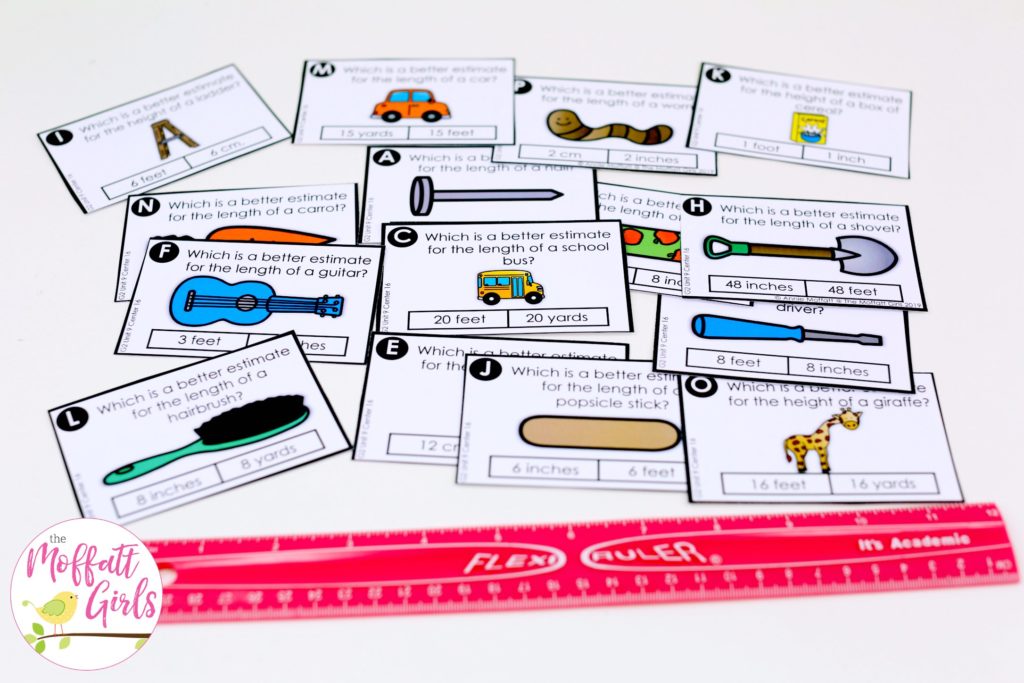
CENTER NUMBER 17: Word Problems
Read the word problem. Use the space on the recording sheet to show your work. Record your answer.
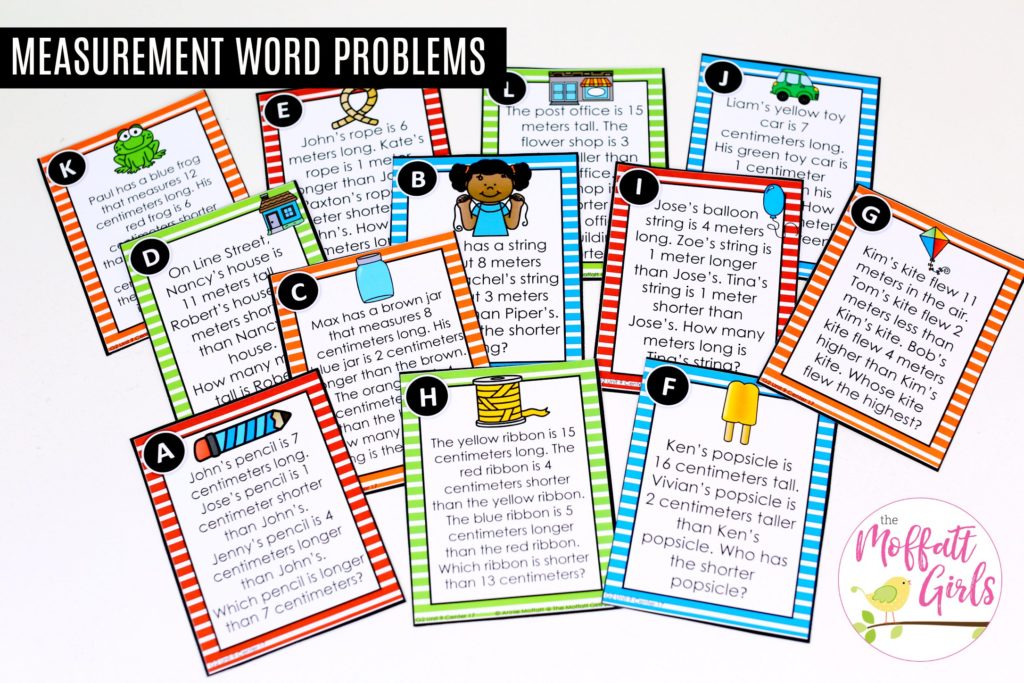
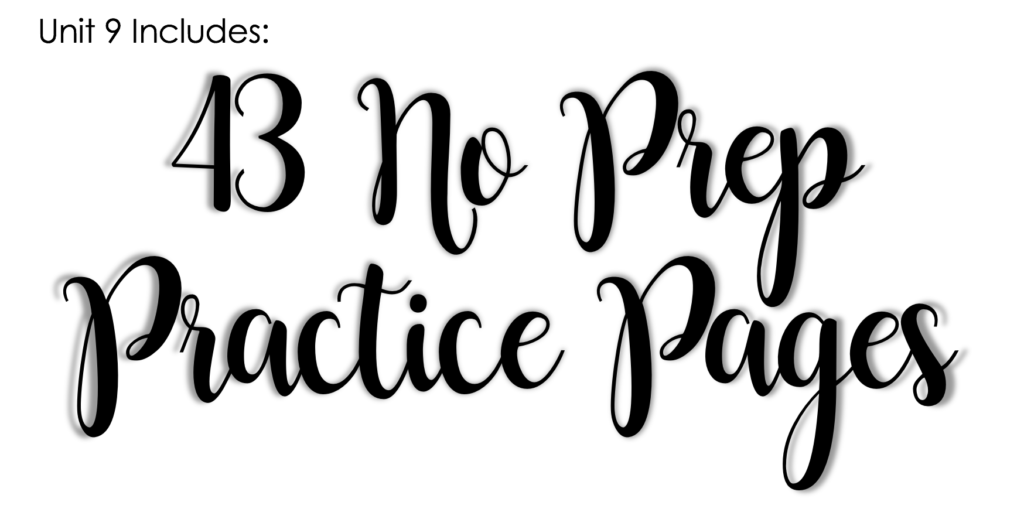
For each page, there is a grade level standard attached so you know EXACTLY what you are covering! You can feel confident that ALL the standards for Second Grade are being covered!
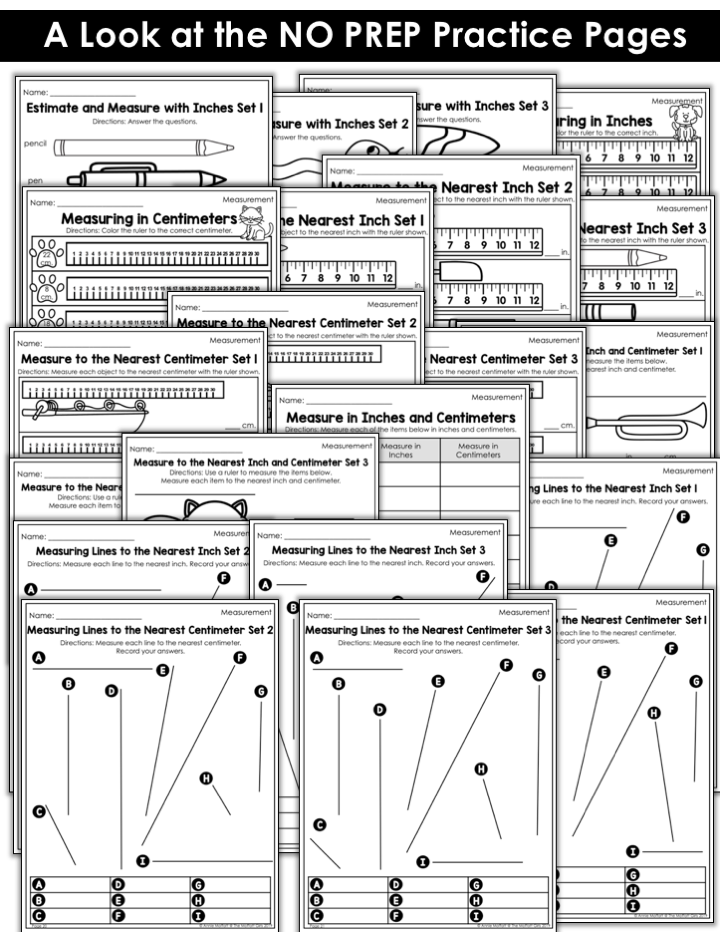
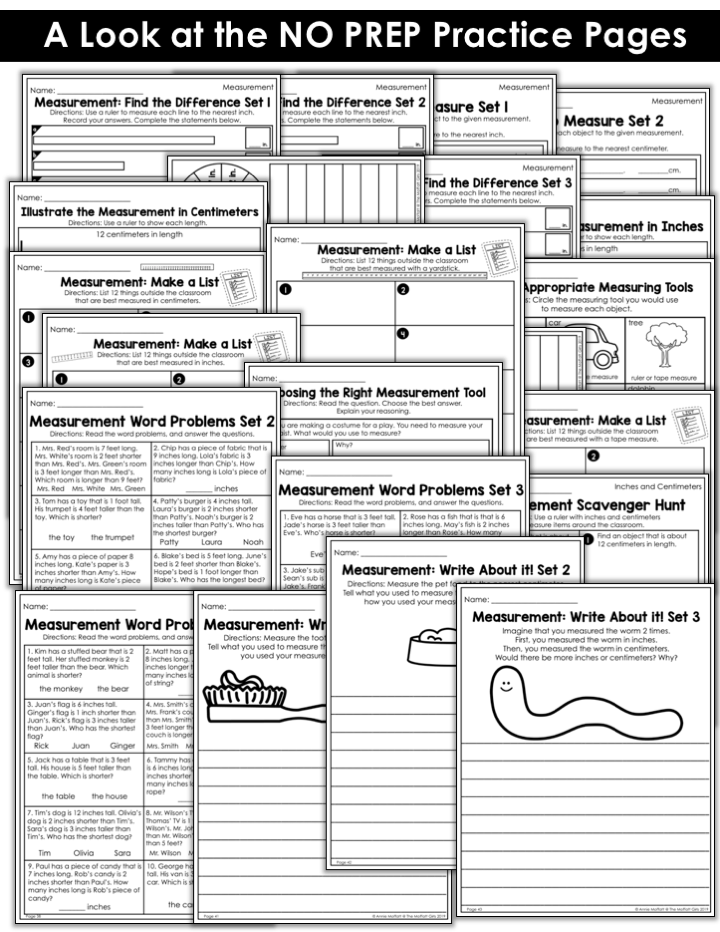
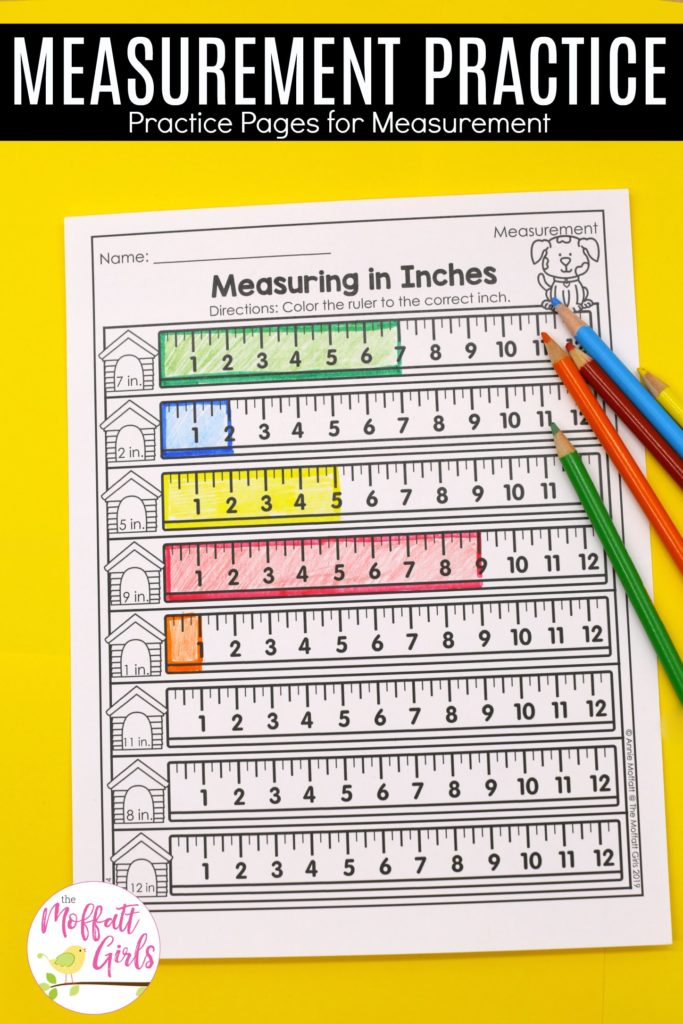
HOW DO I ORGANIZE THE UNITS?
I chose to store the math centers in Sterilite
Click Here to view the 2nd Math Made Fun Unit 1 post.
You can purchase Unit 9 individually HERE or
SAVE BIG WITH THE BUNDLE HERE
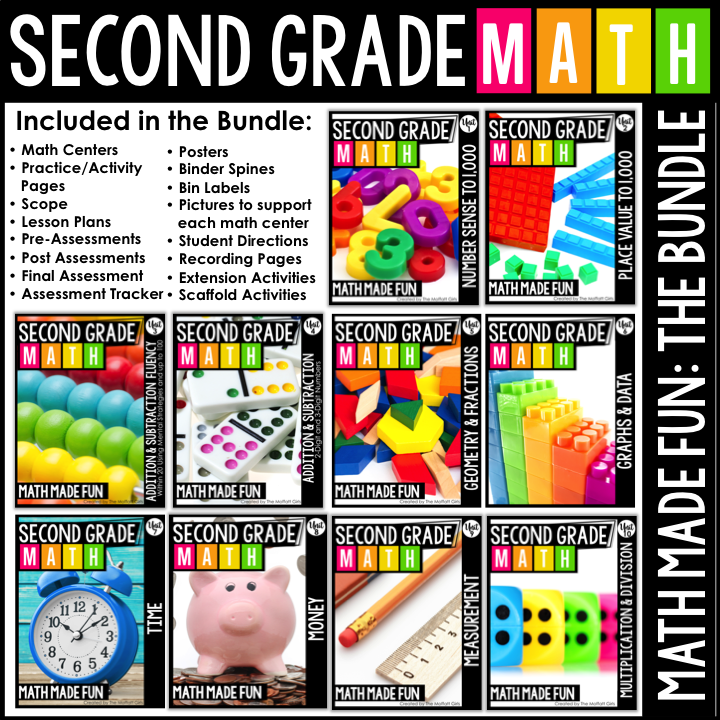
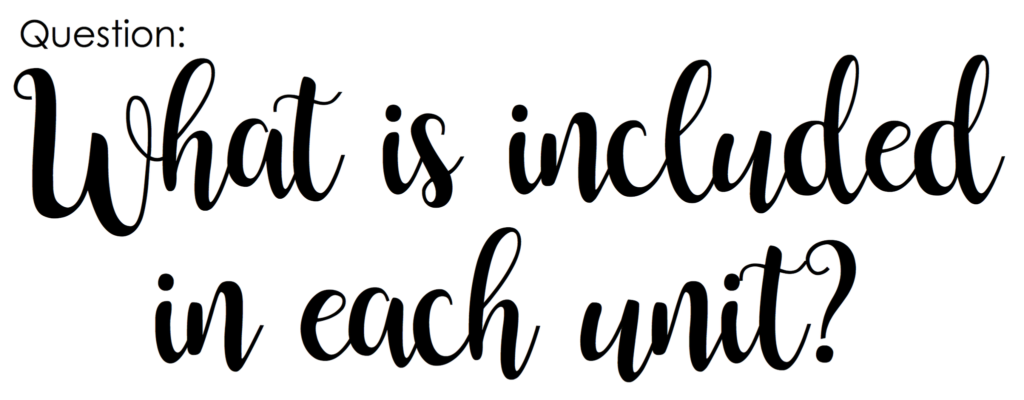
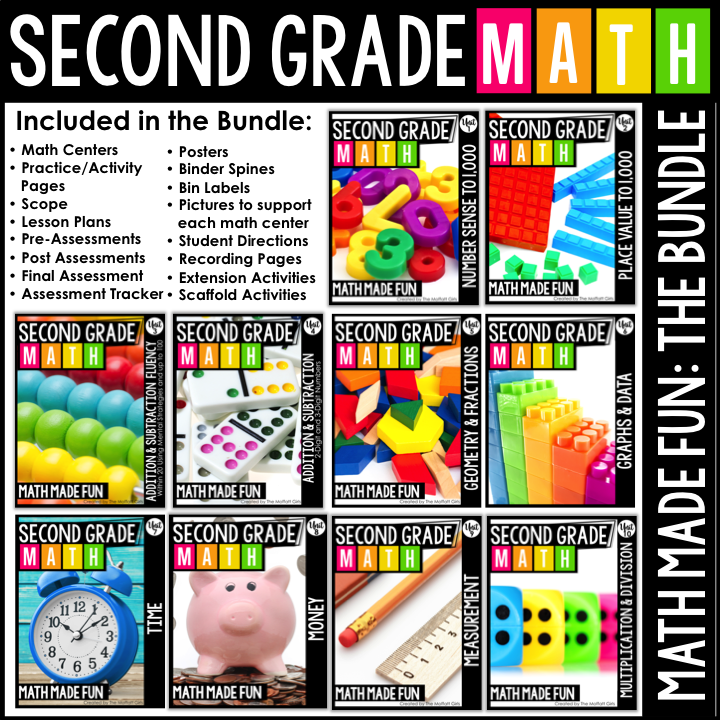


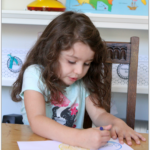
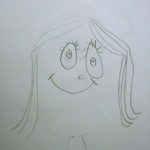
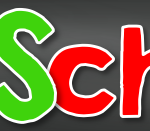
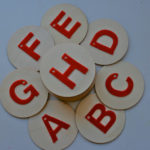


Leave a Reply